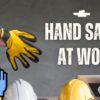[device_target=”desktop”]
Introduction
Working at heights can be a risky endeavor, but with the right safety measures in place, it can be done safely and efficiently. Whether you are a construction worker, commercial cleaner, or maintenance technician, following these essential safety tips can help prevent accidents and injuries while working at heights.
1. Conduct a Risk Assessment
Before starting any work at height, it is crucial to conduct a thorough risk assessment to identify potential hazards and determine the appropriate safety measures. Consider factors such as the height of the work area, weather conditions, and the type of equipment needed.
2. Use Proper Equipment
Always use the appropriate safety equipment when working at heights, such as harnesses, lanyards, and safety nets. Make sure that all equipment is in good condition and properly inspected before each use.
3. Receive Proper Training
Ensure that all workers who will be working at heights receive proper training on how to use safety equipment, how to identify hazards, and how to respond in case of an emergency. Regular refresher training should also be provided.
4. Secure Tools and Materials
Before starting work at height, make sure that all tools and materials are properly secured to prevent them from falling and causing injury to workers below. Use tool lanyards or tethering systems to secure tools.
5. Maintain Clear Communication
Maintain clear communication between workers who are working at heights and those on the ground. Use radios or other communication devices to ensure that everyone is aware of what is happening and can respond quickly in case of an emergency.
6. Follow Proper Climbing Techniques
When climbing ladders, scaffolding, or other structures, always follow proper climbing techniques to prevent falls. Use three points of contact at all times and never carry objects while climbing.
7. Be Aware of Weather Conditions
Be aware of weather conditions when working at heights, as strong winds, rain, or snow can increase the risk of accidents. If weather conditions deteriorate, stop work and wait for conditions to improve.
8. Take Regular Breaks
Working at heights can be physically demanding, so it is important to take regular breaks to rest and rehydrate. Fatigue can increase the risk of accidents, so listen to your body and take breaks as needed.
9. Inspect Equipment Regularly
Regularly inspect all safety equipment, including harnesses, lanyards, and scaffolding, to ensure that they are in good condition and functioning properly. Replace any damaged or worn equipment immediately.
10. Report Unsafe Conditions
If you encounter any unsafe conditions while working at heights, such as damaged equipment or hazardous weather conditions, report them immediately to your supervisor. Do not continue work until the conditions have been addressed.
Conclusion
By following these essential safety tips for working at heights, you can help prevent accidents and injuries and ensure a safe working environment for yourself and your colleagues. Remember that safety should always be the top priority when working at heights.
FAQs
1. How often should safety equipment be inspected?
Safety equipment should be inspected before each use and regularly checked for wear and tear. Replace any damaged equipment immediately.
2. What should I do if I encounter a hazard while working at heights?
If you encounter a hazard while working at heights, report it to your supervisor immediately and stop work until the hazard has been addressed.
3. Can I work at heights without proper training?
No, it is essential to receive proper training on working at heights, including how to use safety equipment and identify hazards.
4. What should I do if I feel unsafe while working at heights?
If you feel unsafe while working at heights, stop work immediately and report your concerns to your supervisor.
5. Are there any height limits for working at heights?
Height limits for working at heights may vary depending on the type of work and the safety measures in place. Always follow safety guidelines and regulations when working at heights.


